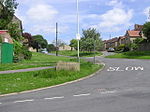Beaumont Hill
County Durham geography stubsPlaces in the Borough of DarlingtonPlaces in the Tees ValleyVillages in County Durham

Beaumont Hill is a village in the borough of Darlington and the traditional and ceremonial counties of Durham in England, situated directly to the north of Darlington on the A167 road.
Excerpt from the Wikipedia article Beaumont Hill (License: CC BY-SA 3.0, Authors, Images).Beaumont Hill
Beaumont Hill,
Geographical coordinates (GPS) Address Nearby Places Show on map
Geographical coordinates (GPS)
| Latitude | Longitude |
|---|---|
| N 54.558888888889 ° | E -1.5486111111111 ° |
Address
Beaumont Hill
Beaumont Hill
DL1 3NQ , Whessoe
England, United Kingdom
Open on Google Maps






